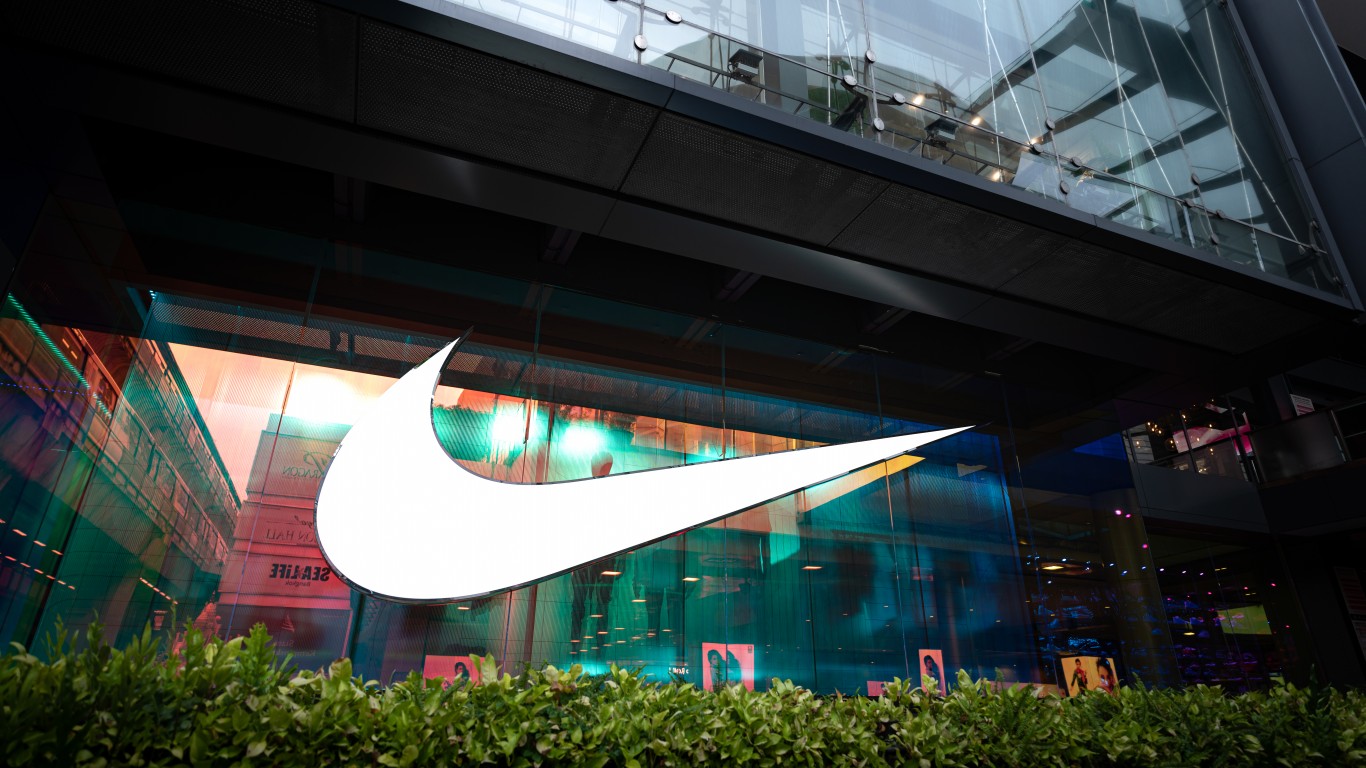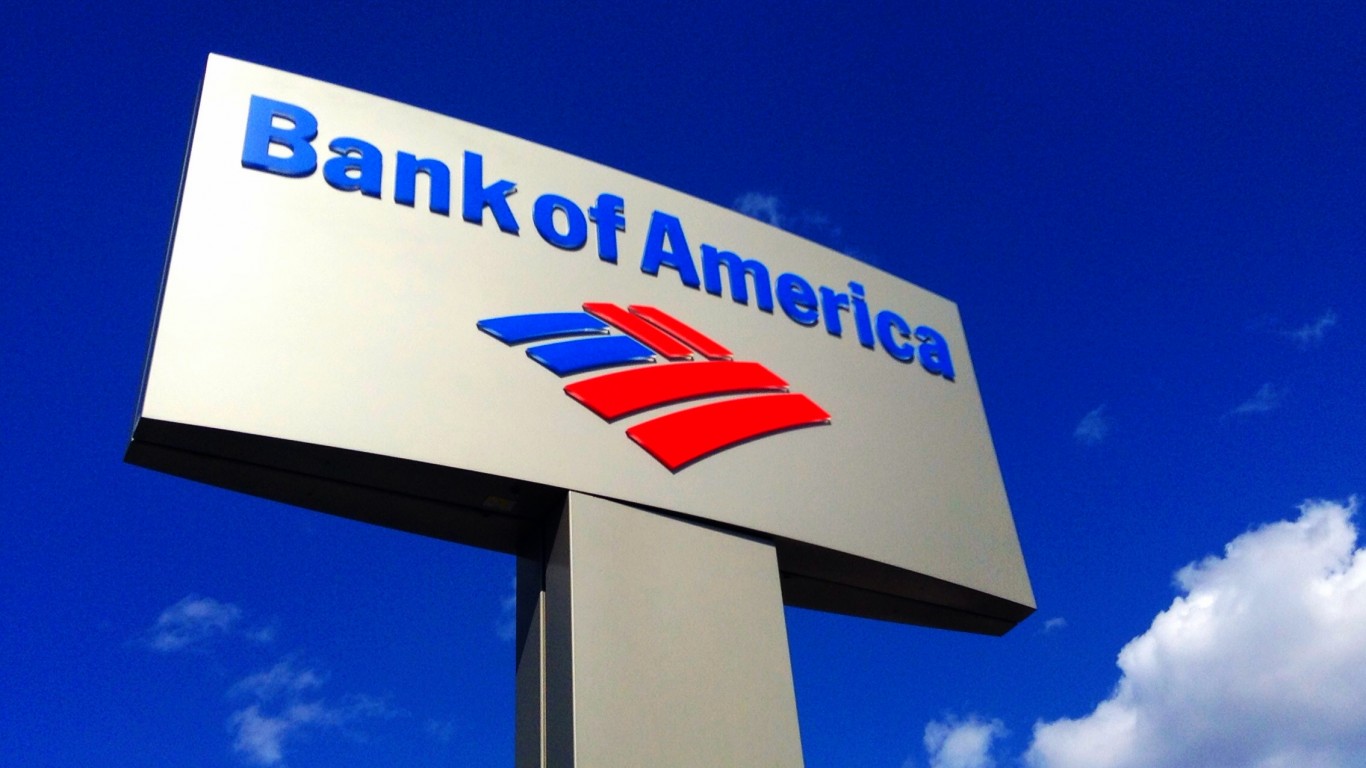
Monday’s early premarket activity had all three major indexes trading higher. Among the winners, Tesla traded up more than 4% following a user poll revealing that Elon Musk should give up his job as head of Twitter. He also tweeted Sunday that no one who can actually keep Twitter alive wants the job.
[in-text-ad]
All three major indexes opened regular Friday trading down slightly. At around 10:00 a.m., the Dow Jones industrials traded down 0.48%, the S&P 500 was down 0.49% and the Nasdaq lower by 0.07%.
We already have previewed two companies (General Mills and Heico) set to report results after markets close Monday or before they open on Tuesday.
Here is a preview of four companies set to report results Tuesday.
BlackBerry
Shares of BlackBerry Ltd. (NYSE: BB) have tumbled by about 52% over the past 12 months. Since posting a 52-week late last December, the stock is down about 56%. The company reports quarterly results after markets close Tuesday.
The one-time mobile phone giant has transformed itself into a software supplier for the security and automotive industries. BlackBerry’s QNX autonomous driving technology was selected by a new China-based for a new vehicle, and last week the U.S. Department of Defense said that the company’s unified endpoint management software was in compliance with guidelines that will continue to make the software available for purchase and deployment by any defense agency.
Of nine brokerages covering the stock, three have a Sell rating, five rate the stock at Hold and the other one has a Strong Buy rating. At a recent price of around $4.20 a share, the upside potential to a median price target of $5.52 is 31.4%. At the high price target of $6.62, the upside potential is 57.6%.
Fiscal third-quarter revenue is forecast at $166.78 million, which would be down 0.7% sequentially and down about 10.3% year over year. BlackBerry is expected to post an adjusted loss per share of $0.07, compared to the prior quarter’s per-share loss of $0.05, and worse than a break-even quarter last year. For the 2023 fiscal year ending in February, the company is forecast to post a loss per share of $0.22, compared with a loss of $0.10 per share a year ago. Revenue is forecast to drop by 4.3% to $686.81 million.
BlackBerry is not expected to post a profit in 2023 or 2024. Shares trade at 40.1 times expected earnings per share (EPS) of $0.10 in 2025. The stock’s 52-week range is $3.94 to $9.67. BlackBerry does not pay a dividend. Total shareholder return for the past year is negative 51.9%.
FedEx
Shares of FedEx Corp. (NYSE: FDX) posted a 52-week low after the company warned on earnings in September, despite a stated plan to slash $2.7 billion in costs that did not help much. Shares have recovered some of that loss, but the stock still trades nearly 28% over the past 12 months. Analysts will be looking at the company’s comments on volume for a hint about consumer spending this holiday season. Expectations are not promising, however. FedEx reports results after markets close Tuesday.
[in-text-ad]
Analysts have adopted a wait-and-see position. Of 31 brokerages covering the stock, 18 have Hold ratings and the rest have a Buy or Strong Buy rating. At a share price of around $171.70, the upside potential based on a median price target of $190.00 is 10.7%. At the high price target of $295.00, the upside potential is 71.8%.
The consensus second-quarter revenue estimate is $23.72 billion, up by 2.1% sequentially and by 1.1% year over year. Adjusted EPS are forecast at $2.83, down 17.8% sequentially and 41.4% lower year over year. For the full 2023 fiscal year ending in May, analysts expect EPS of $14.20, down 31.1%, on sales of $94.57 billion, up 1.1%.
FedEx stock trades at 12.1 times expected 2023 EPS, 9.5 times estimated 2024 earnings of $18.00 and 7.8 times estimated 2025 earnings of $22.13 per share. The stock’s 52-week range is $141.92 to $266.79. FedEx pays an annual dividend of $4.60 (yield of 2.68%). Total shareholder return for the past year was a negative 26.5%.
FuelCell Energy
Hydrogen fuel cell maker FuelCell Energy Inc. (NASDAQ: FCEL) has seen its share price decline by about 44% over the past 12 months, reaching a new 52-week low in mid-October. Shares shot higher when the Inflation Reduction Act was passed in July, but the boost was temporary. FuelCell Energy reports quarterly results before markets open Tuesday morning.
Competitor Plug Power, despite a deal to supply hydrogen to Amazon, has had a larger decline than FuelCell. Another competitor, Bloom Energy, tracked the others until mid-May when it began to climb to an annual high before pulling back to trade roughly flat over the past year.
Of 11 analysts covering the stock, none has a Buy or Strong Buy rating on the shares, and two have a Sell or Strong Sell rating. Shares trade at around $3.50, above the median price target of $3.25. At the high price target of $5.00, the implied gain is 42.9%
Consensus estimates call for fiscal fourth-quarter revenue of $44.9 million, up 4.2% sequentially and 222% higher year over year. The company is expected to post a per-share loss of $0.07, a penny better sequentially and two pennies worse than the year-ago loss. For the full 2022 fiscal year that ended in October, analysts expect a loss per share of $0.32, worse than last year’s loss of $0.30 per share, on sales of $136.64 million, up 96.4%.
[in-text-ad]
FuelCell Energy is not expected to post a profit in 2022, 2023 or 2024. The stock trades at a 2022 enterprise value to sales multiple of 8.3 times. The estimated multiple for 2023 is 7.7, and for 2024 it is 5.3. The stock’s 52-week range is $2.77 to $7.33. The company does not pay a dividend, and the total shareholder return for the past year was negative 44%.
Nike
Over the past 12 months, shares of athletic gear maker Nike Inc. (NYSE: NKE) have declined by about 35%. For the year to date, the Dow component is the fourth-worst performer, down 36.4% and 35.7% lower since its 52-week high posted lasted December. The company’s chief financial officer already has commented that gross margins could fall by as much as 4% in the quarter, the result of steep discounts on high inventory levels of out-of-season goods. Nike reports results after markets close Tuesday.
Of 36 brokerages covering the stock, 24 rate the shares a Buy or Strong Buy. The rest have a Hold rating. At a share price of around $105.10, the upside potential based on a median price target of $125.00 is about 14.2%. At the high price target of $185.00, the implied upside is 76%.
For the company’s second quarter of fiscal 2023, revenue is expected to come in at $12.57 billion, down 0.9% sequentially but up 10.7% year over year. Adjusted EPS are forecast at $0.65, down 29.9% sequentially and by 21.7% year over year. For the full fiscal year ending in May, current estimates call for EPS of $2.98, down 30.1%, on sales of $49.09 billion, up about 5.1%.
Nike stock trades at 35.2 times expected 2023 EPS, 27.7 times estimated 2024 earnings of $3.79 and 22.6 times estimated 2025 earnings of $4.64 per share. The stock’s 52-week range is $85.22 to $171.19. Nike pays an annual dividend of $1.36 (yield of 1.28%). Total shareholder return for the past year was a negative 35%.
Travel Cards Are Getting Too Good To Ignore (sponsored)
Credit card companies are pulling out all the stops, with the issuers are offering insane travel rewards and perks.
We’re talking huge sign-up bonuses, points on every purchase, and benefits like lounge access, travel credits, and free hotel nights. For travelers, these rewards can add up to thousands of dollars in flights, upgrades, and luxury experiences every year.
It’s like getting paid to travel — and it’s available to qualified borrowers who know where to look.
We’ve rounded up some of the best travel credit cards on the market. Click here to see the list. Don’t miss these offers — they won’t be this good forever.
Thank you for reading! Have some feedback for us?
Contact the 24/7 Wall St. editorial team.

 24/7 Wall St.
24/7 Wall St.



